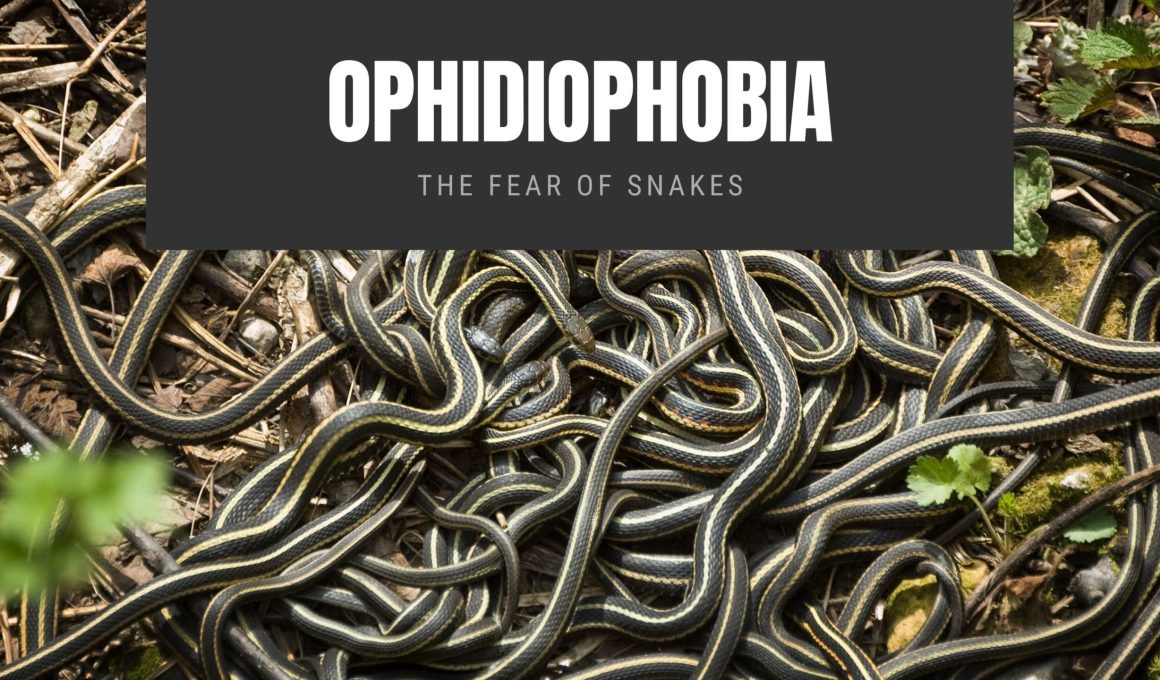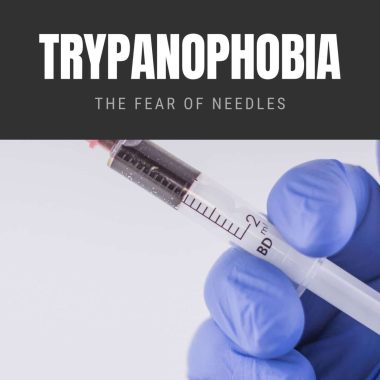Ophidiophobia, also known as ophiophobia, is the irrational fear of snakes. It is one of the most common phobias on earth, as many humans fear snakes.
The fear of snakes or Ophidiophobia is possibly the most widespread subcategory of herpetophobia, the fear of reptiles.
Some studies have suggested that phobias related to reptiles like snakes may be evolutionary, as the human ancestors possibly developed them as a defense or survival mechanism.
However, this theory has failed to explain why Ophidiophobia or fear of snake phobias are somewhat common, while fears of predators, such as lions and tigers, are rare.
Some studies have also revealed that while it may be true that the tendency to pay close attention to reptiles like snakes may be evolutionary, the fear of snakes is learned, not innate.
To illustrate how common the fear of snake phobia is, the action hero Indiana Jones shows it as his weakness when he gets stuck in a booby trap with a snake and yells, “Why is it always snakes? “
Suppose you are one of the millions of people who struggle with snake phobia and ophidiophobia.
In that case, you can understand why an adventurer as brave as Indiana Jones would have such an intense fear of the crawlies.
Since snakes are usually depicted as deadly or dangerous creatures, a fear of snakes, venomous or not, is considered normal.
A 2013 study revealed that the human brain is evolutionarily conditioned to be scared of all snake-like forms.
If what is written in the scriptures of religions like Christianity is true, then the fear makes sense, as snakes have always been a threat to humans.
Now that we have established that the majority of humans have a reasonable amount of fear of snakes, it is essential to note that when this fear begins to affect daily life and disturb how you usually function, it is fine to take it more seriously.
If the mere mention of the words “Snake” gives you the heebie-jeebies and sends you into full panic mode, then you have ophidiophobia.
Here, you’ll learn about the possible causes of ophidiophobia, the symptoms, diagnosis, and available treatment options. Kindly read further.
What Are the Causes of Ophidiophobia?
The actual cause of most phobias, specific or not, is usually unknown. One particular cause of the fear of snake phobia is yet to be identified, as it can come from a boatload of causes.
Sometimes, this phobia may have multiple factors, each stalked on top of the other, transforming a latent (undeveloped) fear into something more disturbing and anxiety-inducing.
Below are some possible causes of ophidiophobia or ophiophobia:
- A negative experience: If you had a traumatic experience with a snake as a child, it could leave you with an intense and long-term phobia of the reptile. Such experiences could include being bitten by a snake or being in a frightening environment that prominently features snakes and causes you to feel trapped or helpless.
- Learned behaviors: For people who grew up seeing a relative or parent demonstrating intense fear around snakes, it is not uncommon to learn that these creatures are one to fear. Learned fear is true of many specific phobias, and that includes ophidiophobia.
- Portrayal in media: Often, people learn to become afraid of something because society or popular media makes us believe it is scary. Mice, bats, clowns, and snakes usually end up on the list of scary things. If you have seen too many horror or scary movies or images that feature reptiles like snakes over an extended period, you may start learning to fear them.
- Learning about people’s negative experiences: It could be triggering when someone describes a scary encounter with a snake. Fear is usually generated by expecting something that causes discomfort and pain instead of a memory of dealing with the pain.
Effects of Ophidiophobia
Ophidiophobia can be a sneaky phobia. Over time, people may start to fear things totally unrelated to snakes. For instance, you may develop a fear of pet stores that have snakes for sale.
You may begin to avoid hiking trips, camping, or even nature preserves and zoos. You may also develop a secondary fear of other reptiles.
Symptoms of Ophidiophobia
The fear of snakes can be tricky to diagnose, as the symptoms vary widely between individuals.
You may be afraid of encounters with big or venomous snakes if you have mild ophidiophobia.
For people who have a more severe phobia, you may also be frightened of smaller snakes. You may even find it difficult to look at videos or photographs in which there are snakes.
If you notice that you are scared of all types of lizards, from small geckos to giant Komodo dragons, you have more of a herpetophobia than ophidiophobia.
The symptoms of ophidiophobia may include:
- Shaking
- Crying
- Running away from snakes
- Heart palpitations
- Difficulty breathing
- Dizziness or lightheadedness
- Nausea
- Sweating, especially in your extremities such as your palms
- Increased heart rate
- Difficulty breathing or shortness of breath
- Trembling and shaking
While not everyone may experience the same symptoms, these symptoms may become worse as you get physically closer to any size of a snake or when you feel the time of a proposed snake interaction is getting closer to happening.
How is the Fear of Snakes Phobia (Ophidiophobia) Diagnosed?
Specific phobias can usually be quite delicate to diagnose because not all of them have been listed in the generally accepted Diagnostic and Statistical Manual of Mental Disorders (DSM–5).
This manual is a reference tool that is used by mental health professionals when they have to diagnose different mental health disorders or issues.
In this case, your intense fear of snakes will likely be diagnosed as a specific phobia. A specific phobia means anxiety or an intense fear in response to a particular trigger, such as an environment, an animal, or a situation.
The first step you need to take in learning your diagnosis is to talk about your fears and symptoms with your therapist.
You will talk through various experiences or memories of your phobia to help them get a more vivid picture of your history.
Then, together, your doctor can discuss different likely diagnoses to see which one feels the closest to your personal experience.
Once that is done, you can decide together on suitable treatment.
What is the Treatment for Ophidiophobia?
Fortunately, even though ophidiophobia is believed to be a slightly natural fear for all humans, it has an excellent chance of successful treatment.
It is essential, though, to choose a therapist you feel comfortable and can trust to help with a smooth recovery process.
Different treatment options will work for different people, so have no fear when trying something out of the ordinary in case a normal course of treatment doesn’t work.
If you diligently treat your condition, things can slowly but surely improve.
It is worth noting that no particular treatment has been identified for a specific phobia, such as ophidiophobia. And it is not out of place for you to explore a few different treatment methods together.
It’s primarily about finding the perfect treatment combination that works for you. Below are standard methods of treatment for ophidiophobia:
Exposure Therapy
This type of talk therapy, also known as systematic desensitization, sounds exactly like this: You will be exposed to the same thing you are afraid of in a safe and non-threatening environment.
For ophidiophobia or fear of snakes phobia, this may mean watching videos or looking at pictures of snakes in your therapist’s office and discussing the emotions and physical responses that come up as you watch or look.
Sometimes, you may have to try a virtual reality system to make you feel like you are around a snake in a real but digital space where nothing can genuinely hurt you.
After this point, you may slowly work up to being around actual snakes in a safe and regulated environment, like the zoo.
Cognitive-behavioral therapy
This is one of the most popular forms of therapy used for treating specific phobias. In this kind of talk therapy, you will work on short-term goals with your therapist to help change possible patterns or problems in your thinking.
Cognitive behavior therapy is a treatment plan that generally involves hands-on problem-solving. It can help you change how you feel about snakes.
In this case, you and your therapist may discuss ways to reframe snakes so that you no longer see them as animals to be feared. You may have to watch documentaries or take online classes about how friendly and harmless snakes can be.
If that isn’t convincing enough, you might also go to a lecture by someone who studies snakes (a herpetologist) to learn more about those that are venomous, those that are friendly, and how you can feel safe around snakes.
Medication
Medications are usually not the first option as they do not cure your phobia. Meds are best used together with your regular talk therapy while your phobia is being treated.
Two primary types of medication are used to help with treating specific phobias: Sedatives and beta-blockers.
Beta-blockers help your heartbeat pump slightly slower than usual, so if you suffer a panic or fear response, they will help you feel calm and relaxed rather than spiraling.
Sedatives, on the other hand, are mainly prescription drugs that will help you relax or sleep. However, the use of sedatives is not encouraged as they can lead to dependence.
For this reason, many prescribers ensure to avoid them for the treatment of anxiety or phobia, suggesting instead that you work to treat the phobia with regular counseling.
Final Thoughts
More than half of the world’s population is afraid of snakes and other reptiles, so there is nothing to be ashamed of if you have ophidiophobia. Ensure to seek professional help once you notice that your ophidiophobia has begun to affect your daily life.
We hope that this has been a good read. Kindly leave a comment below.









